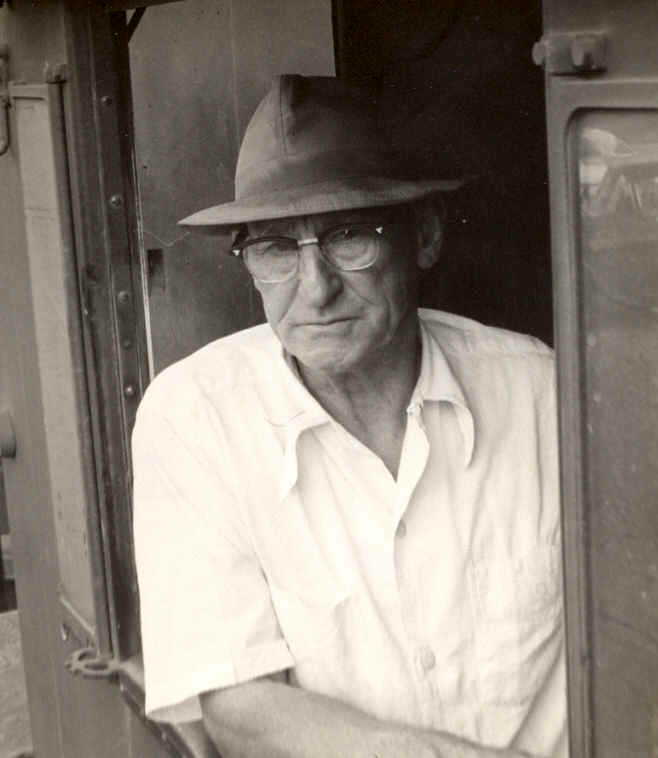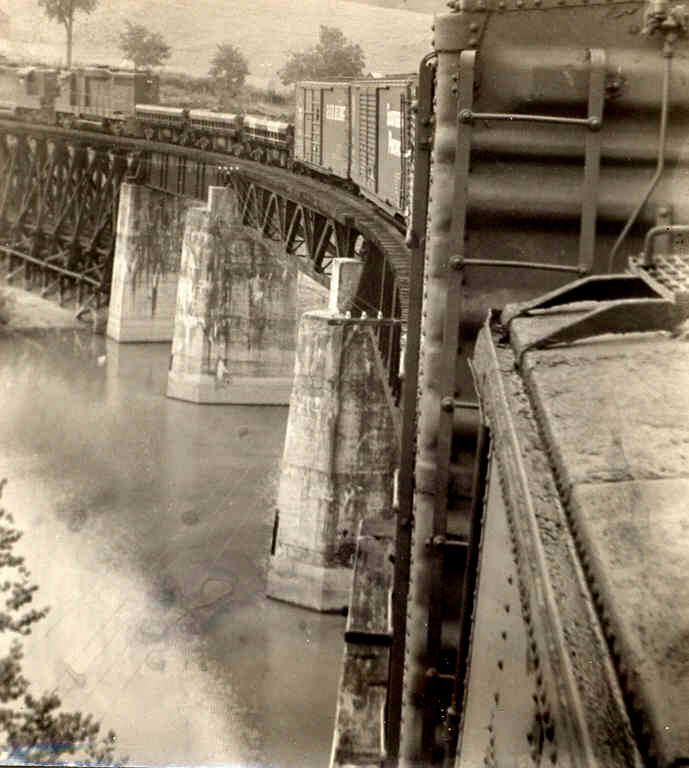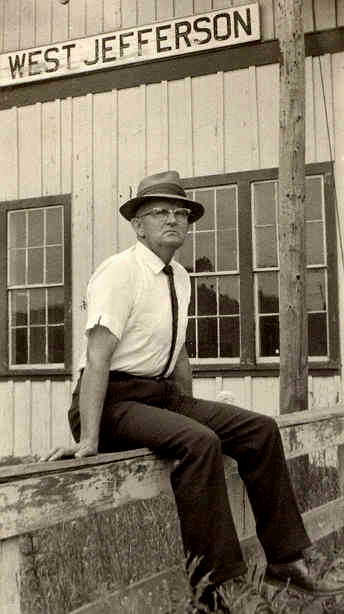An article from the Washington
County News, Abingdon, Virginia - Thursday, July 22, 1965
The small mountain
town of Abingdon, Virginia, shares a strange bond with the smaller
mountain town of West Jefferson, North Carolina. That bond is a railroad
that doesn't make any money, a railroad that runs through a beautiful
and ageless land, a railroad that carries no passengers, no mail,
and very little freight.
Yet it is a railroad
loved by everyone who knows it, and to a fortunate few it offers an
ever-changing spectacle of scenery.
But something
that doesn't pay cannot exist forever. And when this train ceases
to run Abingdon and the world of railroading will have lost something
it cannot replace.
In the early
1890s it was the Abingdon Coal and Iron Company Railroad and that
was its beginning. Then, in 1900, it became the Virginia-Carolina
Railroad and its tracks ran 16 miles into Damascus. It slowly grew
into the mountains, following the booming lumber industry, and in
1918 it became a part of the Norfolk and Western system, and its
name was changed to the Abingdon Branch, although people still called
it the Virginia Creeper. Seven trains a day wound into the hills.
People depended upon the railroad for mail, for news, for goods, for
transportation.
But the depression
came and lumber industry faltered. Freight business dropped. The automobile
became the method of transportation.

Engineer
Hughes
|
Then new kinds
of passengers came aboard the train, people not interested in going
to a particular place, but people wanting to see an unspoiled countryside.
And the train carried tourists into the waiting mountains, carried
them by cascading waterways, across 101 high wooden trestles, and
hoisted them up to the highest point on rails in Easter North America,
3, 557 feet into the sky. The steam billowed from the engine as it
huffed its way toward White Top Mountain.
In 1957 the huffing
and puffing of the steam engine was replaced with the whine and roar
of a diesel. One train a day ran now. Trucks took over carrying the
mail and freight over new highways into the hills. Soon the train
ran only three times a week, tourists were carried only on special
excursions. It became necessary to get special permission to ride
the train.
So we wrote to
Norfolk and Western in Roanoke and asked if we could take a trip on
the Virginia Creeper. Ben Dulaney, manager of news and community services,
wrote back and told us our trip had been approved, and that he was
coming down to see his mother in Glade Springs and was going to go
along with us. My cousin Preston Wolfe and I met Dulaney and Paul
Kabiness, the assistant road foreman, in Abingdon on a cloudy-bright
July morning, and when the train came along we all climbed aboard.

Crossing
Holston Lake.
Click on the photo for a comparison between 1965 and 2002.
|
We left Abingdon
and wound through the Knobs and soon came to the middle fork of the
Holston, then crossed the lake and rolled toward Damascus. The crew
of the train, engineer Hughes, brakemen Davis and Akers, and conductor
Rodenberry, went about their work with an an enjoyment few working
men have. They liked what they were doing, and took pride in their
job. When we left Damascus and started into the mountains I saw one
of the reasons.
There is a world
of shadow and light, of flickering water and enfolding mountains,
that few people have the chance to see. Most of us are restricted
to highways, with billboards blocking the landscape and other drivers
lunging at us from all directions, or we take occasional walks into
areas where the magnificence of the scenery is rivaled by the abundance
of discarded beer cans.

Damascus
station
|
This train follows
its twin ribbons of steel into a land inaccessible by road, where
man has not yet brought his questionable improvements. Around a bend
a startled deer will bound into the woods, and high in a tree a blacksnake
will stretch lazily in the summer heat. You can watch the movement
of wind along the side of a hill, the foaming water of a stream as
it falls down the mountain. Cattle will be grazing in the near fields,
and in the tiny villages along the way there are always children waving.
There is a tranquility to this landscape, and the men who make this
journey seem to have absorbed something of what they constantly pass
through.

West Jefferson station
|
We moved our
way up through the mountains, circling and climbing and sometimes
looking back and seeing the track below us. Soon we were on the side
of White Top, going up a steep three-percent grade, and then we were
across the top and slanting down into North Carolina. There were more
roads to cross here, and the whistle shrieked to warn approaching
traffic. Eventually we came to West Jefferson. The train switched
a few cars and turned around, and we started back.
On the way back
I kept thinking of one thing. This train has been running for more
than 60 years, but the reasons for its existence are becoming fewer.
In another 60 years the Eastern Seaboard will be one great city, and
people will be crowded into smaller and smaller spaces. These people
will be wanting a place to go to be alone, they will be seeking a
private land where they can escape the crush of their cities.
And I wondered
where, in 60 years, this train will be.
Richard
Smith, July 1965
Link
to more photos from 1965
Virginia
Creeper Trail website